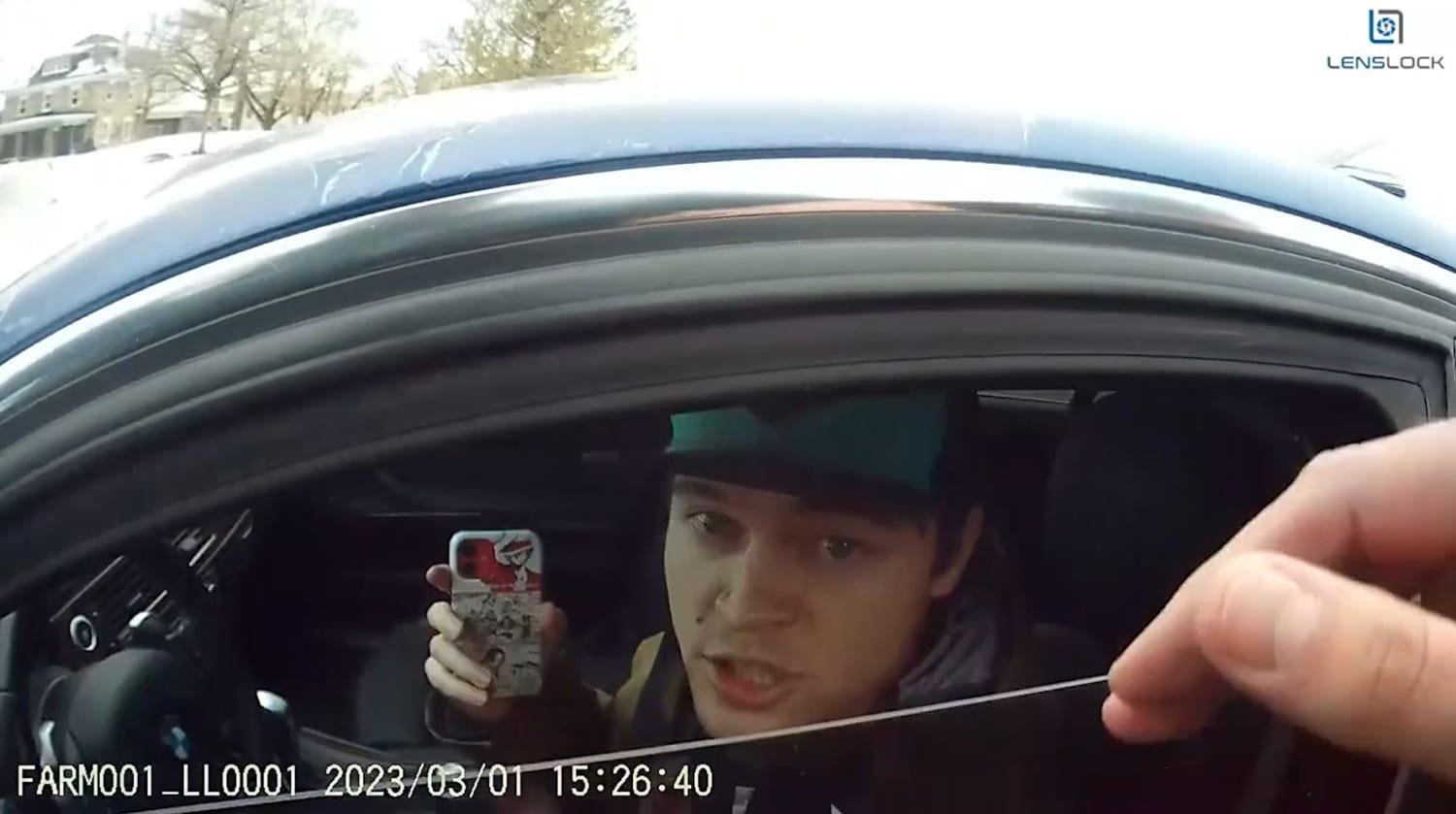In the realm of law enforcement, the balance between duty and discretion often hangs by a thread, a thread that can unravel in an instant. Such was the case surrounding a fatal traffic stop in Brevard County, where the ensuing events sparked a heated debate over the use of lethal force by police. Recently, a U.S. Court of Appeals brought the narrative to a close, clearing Brevard County Sheriff’s Deputy of any wrongdoing in the tragic incident. This decision not only reignites conversations about the complexities of police encounters but also delves into the broader implications for law enforcement policies and community relations. As the dust settles, the story unfolds, revealing layers of perspective and the challenges faced by those tasked with maintaining public safety in an increasingly scrutinized environment.
Analysis of the Courts Ruling and Its Implications for Law Enforcement Practices
The recent ruling from the U.S. Court of Appeals regarding the Brevard County Sheriff’s Deputy has profound implications for law enforcement practices across the nation. By clearing the deputy of any wrongdoing in the fatal shooting that occurred during a traffic stop, the court has effectively upheld the principle of qualified immunity, which protects law enforcement officers from being held liable for actions taken during the execution of their duties. This decision underlines the legal standards that officers must meet to justify the use of deadly force in high-pressure scenarios, reinforcing the notion that officers are often forced to make split-second decisions based on the information available to them at the time.
As a consequence of this ruling, several key implications may arise for law enforcement agencies, including:
- Increased Training Requirements: Agencies may be prompted to enhance training programs to better prepare officers for handling high-stress situations and understanding the complexities surrounding the use of force.
- Policy Reevaluation: Departments might revisit their use-of-force policies to ensure they align with the ruling while still prioritizing public safety and community relations.
- Legal Education: Officers may receive more comprehensive education on legal standards and the ramifications of their actions to minimize potential liabilities.
| Implication | Description |
|---|---|
| Enhanced Accountability | Potential push for greater transparency in law enforcement actions. |
| Community Engagement | Fostering better communication between officers and the communities they serve. |
| Legal Precedent | This case may influence future rulings related to qualified immunity. |

Understanding the Circumstances Surrounding the Fatal Traffic Stop Incident
The tragic events surrounding the recent fatal traffic stop incident have sparked intense scrutiny and debate within the community and beyond. Critical to understanding this situation is recognizing the context in which the shooting occurred. Eyewitness accounts, video footage, and law enforcement statements have all contributed to piecing together the series of actions that led up to the shooting. Notably, the circumstances included a high-speed chase and the suspect’s alleged erratic behavior, which prompted the deputy’s response. Throughout the incident, there were indications that the deputy was acting under heightened stress and perceived threats, making the decision to use lethal force a complex issue laden with questions about judgment and protocol.
As the legal proceedings unfolded, the U.S. Court of Appeals concluded that the deputy’s actions were justified based on the evidence presented. Several key factors played a role in the court’s decision, which can be summarized as follows:
- Threat Assessment: The deputy believed the suspect posed an immediate threat to public safety.
- Behavioral Indicators: The suspect’s aggressive actions suggested a willingness to engage violently.
- Training and Protocol: The deputy followed established procedures for high-risk traffic stops.

Navigating the Legal Landscape: Precedents and Future Considerations
The recent ruling by the U.S. Court of Appeals regarding the Brevard County Sheriff’s deputy has significant implications for law enforcement policies and practices across the nation. As legal professionals and law enforcement agencies analyze this case, several key precedents emerge that could shape future interactions during traffic stops, including:
- Legal Standards for Use of Force: The ruling reinforces the existing standards that govern when officers may deploy lethal force, emphasizing the need for immediate threat assessment.
- Qualified Immunity Doctrine: This case reiterates the challenges posed by qualified immunity, which can shield officers from liability unless they violate clearly established laws.
- Implications for Policy Training: Law enforcement agencies may need to revisit training protocols to ensure compliance with court rulings and enhance de-escalation techniques.
Looking towards the future, the legal and ethical landscape is poised for further evolution. Understanding the ramifications of this case encourages a dialogue surrounding community relations and transparency in policing, which are crucial for fostering trust. Notably, jurisdictions must consider:
| Consideration | Potential Impact |
|---|---|
| Policy Reform | Encourages local governments to revise use-of-force policies to prioritize de-escalation. |
| Accountability Measures | Calls for increased oversight and accountability in law enforcement practices. |
| Community Engagement | Highlights the necessity of building stronger relationships between police and the communities they serve. |

Promoting Best Practices in Officer Training and Community Engagement
The recent ruling from the U.S. Court of Appeals regarding the Brevard County Sheriff’s Deputy highlights the critical importance of implementing robust training programs for law enforcement officers. Such programs must emphasize de-escalation techniques and situational awareness to reduce the potential for tragic outcomes during traffic stops. The court’s decision serves as a reminder of the complexities surrounding law enforcement interactions and the need for ongoing education and training. Key areas for development include:
- Use of Force Policies: Officers should be well-versed in policies that govern timing and appropriateness of force.
- Community Interaction: Building trust through proactive community engagement strategies is essential.
- Incident Review Processes: Regular assessments of past incidents will help inform better future practices.
Furthermore, community engagement plays a vital role in fostering safer environments for both officers and citizens. By cultivating partnerships with local organizations and residents, law enforcement agencies can gain invaluable insights into the communities they serve. Effective engagement not only aids in crime prevention but also promotes transparency and accountability. An effective strategy might include a comprehensive framework where community members contribute to:
| Engagement Strategy | Expected Outcome |
|---|---|
| Community Forums | Enhanced public trust |
| Youth Programs | Stronger intergenerational ties |
| Feedback Mechanisms | Improved accountability |
Q&A
Q&A: Brevard County Sheriff’s Deputy Cleared by U.S. Court of Appeals in Fatal Traffic Stop Shooting
Q1: What incident prompted the recent ruling by the U.S. Court of Appeals regarding the Brevard County Sheriff’s Deputy?
A1: The incident in question involved a traffic stop that escalated into a fatal shooting. The deputy was conducting the stop when a confrontation occurred, resulting in the deputy discharging their weapon, which led to the death of the civilian involved. The events of that day raised significant legal questions regarding the use of force and the deputy’s actions during the confrontation.
Q2: What was the basis for the U.S. Court of Appeals clearing the deputy of any wrongdoing?
A2: The U.S. Court of Appeals ruled that the deputy acted within the bounds of the law during the incident. The court found substantial evidence indicating that the deputy faced a legitimate threat to their safety during the traffic stop, which justified the use of lethal force in that context. The ruling emphasized that the deputy’s decision was reasonable given the circumstances they encountered.
Q3: How has the community reacted to the court’s ruling?
A3: Community reactions have been mixed. Supporters of the deputy have expressed relief, emphasizing the challenges law enforcement officers face during high-stress situations. They argue that the ruling validates the difficult decisions officers must make in split-second scenarios. Conversely, there are criticisms from community members and advocacy groups who express concerns about accountability in law enforcement and the implications of the use of deadly force in such encounters.
Q4: What are the potential implications of this ruling for law enforcement practices?
A4: The ruling could set a precedent regarding how courts evaluate the use of force by law enforcement officers. It may encourage law enforcement agencies to review their training protocols concerning situational awareness and de-escalation techniques. Furthermore, the ruling could influence future cases involving similar situations, as it provides a benchmark for evaluating the circumstances under which officers may use lethal force.
Q5: Will there be any further legal actions related to this case?
A5: At this time, it appears that the ruling by the U.S. Court of Appeals resolves the criminal aspect for the deputy involved. However, civil litigation could still follow, as affected parties may seek to hold the county or the sheriff’s office liable in related civil rights claims. Additionally, the matter may prompt discussions about policy reform within the sheriff’s office and broader community dialogue regarding police-community relations.
Q6: What steps might be taken to address concerns about police conduct in the future?
A6: Moving forward, local law enforcement agencies may initiate comprehensive reviews of their training programs, focusing on conflict resolution and de-escalation techniques. Engaging community members in discussions around police practices and accountability can also foster greater understanding and cooperation. Furthermore, establishing oversight committees to oversee such incidents might help to build trust and ensure proactive measures are in place to prevent similar occurrences.
—
This Q&A aims to provide a clear and neutral overview of the recent ruling regarding the Brevard County Sheriff’s Deputy while fostering understanding of the broader impact on law enforcement practices and community relations.
Future Outlook
In the wake of a contentious legal battle, the decision by the U.S. Court of Appeals to clear Brevard County Sheriff’s Deputy reflects the intricate dance of law enforcement accountability and the complexities surrounding use-of-force situations. As communities strive for justice and transparency, this case serves as a poignant reminder of the challenges faced by those who serve and protect. While the court’s ruling may bring a measure of closure for some, the broader conversations about policing practices, public safety, and the lasting impact of such incidents remain ever relevant. Moving forward, it is essential for all stakeholders—law enforcement, legal authorities, and the civilian populace—to engage in constructive dialogue aimed at fostering trust and understanding, paving the way for safer communities for all. As we reflect on this case, let us remain committed to learning from past actions and ensuring that every voice is heard in the pursuit of justice.

